India’s Past Military Operations Against Pakistan
Syllabus :GS 2/IR
- Operation Sindoor represents a significant shift in India’s approach to naming military operations.
- Moving away from the traditional use of powerful, mythological, or tactical terms, this new operation introduces a more emotionally resonant narrative.
- Unlike previous operations such as Riddle, Meghdoot, and Bandar, which reflected traditional displays of military strength, Operation Sindoor places a focus on human experience and tribute.
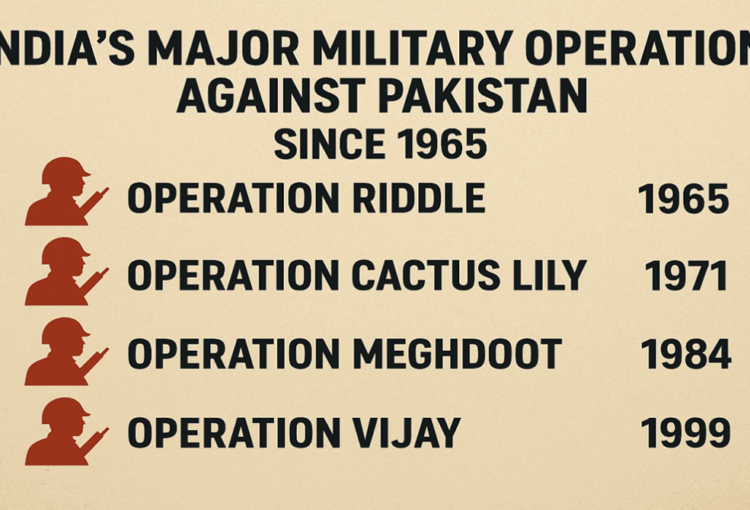
Notable Past Operations
Operation Riddle (1965 Indo-Pak War):
- India launched Operation Riddle in response to Pakistan’s offensive actions under the code names Operation Gibraltar and Grand Slam during the 1965 war. Pakistan’s violation of the Line of Control (LoC) and their advance into Jammu and Kashmir prompted India to target the cities of Lahore and Kasur on September 6, 1965. The operation had a debilitating impact on Pakistan’s military capabilities.
Operation Ablaze (1965 Indo-Pak War):
- Conducted in April 1965, Operation Ablaze was India’s preemptive military mobilization in response to rising tensions with Pakistan, particularly in the Rann of Kutch. While it did not immediately escalate into direct combat, the operation signaled India’s readiness and helped lay the groundwork for the subsequent military engagements that culminated in the Tashkent Agreement.
Operation Cactus Lily (1971 Indo-Pak War):
- Also known as The Meghna Heli Bridge or The Crossing of the Meghna, Operation Cactus Lily was a daring air assault conducted in December 1971 during the Bangladesh Liberation War. The operation, executed by the Indian Army and Air Force, aimed to bypass a Pakistani stronghold at Ashuganj and reach Dhaka by crossing the Meghna River, a crucial strategic move in the war.
Operations Trident and Python (1971 Indo-Pak War):
- These naval offensives targeted Pakistan’s port city of Karachi during the 1971 war. Operation Trident, which took place on the night of December 4-5, 1971, marked the first use of anti-ship missiles in the region. The operations inflicted significant damage on Pakistani naval assets, contributing to the ultimate victory for India and the creation of Bangladesh.
Operation Meghdoot (Siachen Conflict, 1984):
- Launched in April 1984, Operation Meghdoot was a preemptive action by India to assert control over the strategically important Siachen Glacier, countering Pakistan’s growing presence in the region. India quickly deployed troops to key heights on the glacier, gaining a significant advantage by the time Pakistan mobilized.
Operation Vijay (1999 Kargil Conflict):
- Operation Vijay was India’s military response in May 1999 to reclaim territory occupied by Pakistani forces in the Kargil sector. The operation successfully expelled Pakistani troops and recaptured critical strategic points, marking a significant victory for India in the Kargil War.
Operation Safed Sagar (1999 Kargil Conflict):
- Operation Safed Sagar refers to the Indian Air Force’s role during the Kargil War. The operation involved extensive airstrikes aimed at dislodging Pakistani forces from Indian positions along the LoC. This was the first large-scale use of air power in the region since the 1971 Indo-Pakistani War and played a key role in India’s success.
Unnamed Operation (2016 Surgical Strikes):
- In response to the Uri attack, Indian special forces carried out a series of surgical strikes in September 2016 against terrorist launch pads across the LoC in Pakistan-administered Kashmir. The operation was notable for its lack of a formal codename and marked a shift towards more proactive counter-terrorism actions by India.
Operation Bandar (2019 Balakot Air Strikes):
- This operation was India’s response to the Pulwama terror attack in February 2019, which killed 40 CRPF personnel. The Indian Air Force carried out airstrikes on a Jaish-e-Mohammed training camp in Balakot, Pakistan, marking the first cross-LoC airstrike since 1971. The strikes led to brief aerial skirmishes between the two nations and heightened tensions.
Consider the following statements regarding India’s military operations:
- Operation Sindoor represents a shift in India’s naming strategy, moving towards more emotionally resonant names instead of conventional or mythological ones.
- Operation Riddle was launched in response to Pakistan’s Operation Gibraltar and Grand Slam in the 1965 war, targeting areas such as Lahore and Kasur.
- Operation Ablaze was a preemptive military action initiated by India in response to rising tensions in the Rann of Kutch, which eventually led to the Tashkent Agreement.
- Operation Safed Sagar involved airstrikes to eliminate Pakistani forces in the Kargil sector during the 1999 conflict, marking the first large-scale use of air power since the 1971 war.
Which of the above statements is/are correct?
A) 1, 2, and 3 only
B) 2, 3, and 4 only
C) 1, 3, and 4 only
D) 1, 2, 3, and 4
Answer: D) 1, 2, 3, and 4
Explanation:
- Statement 1 is correct: Operation Sindoor indeed marks a shift in India’s naming conventions, focusing on emotional and human-centric narratives.
- Statement 2 is correct: Operation Riddle was launched in 1965 in response to Pakistan’s military actions under Operation Gibraltar and Grand Slam, targeting cities like Lahore and Kasur.
- Statement 3 is correct: Operation Ablaze was a preemptive military move by India during the Rann of Kutch crisis, and it set the stage for the Tashkent Agreement.
- Statement 4 is correct: Operation Safed Sagar involved the Indian Air Force’s airstrikes in the Kargil sector and marked the first significant use of air power since the 1971 war.
Quad concludes Indo-Pacific Logistics Network simulation
Syllabus :GS 2/IR
- The Quad countries recently conducted a Tabletop Exercise at the Asia-Pacific Centre for Security Studies in Honolulu, Hawaii, to further the development of the Quad Indo-Pacific Logistics Network (IPLN).
Indo-Pacific Logistics Network (IPLN)
- The IPLN is an initiative designed to enhance the logistical capabilities of Quad nations, enabling them to respond more swiftly and effectively to natural disasters in the Indo-Pacific region. This collaborative effort reflects the Quad’s commitment to ensuring a free and open Indo-Pacific and underscores the importance of strengthening practical cooperation to address regional challenges.
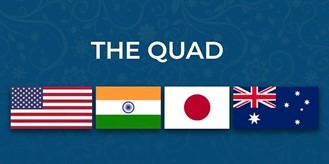
The Quad
- The Quad, comprising India, Japan, Australia, and the United States, was initially formed after the 2004 Indian Ocean tsunami to coordinate disaster relief efforts. It was officially formalized in 2007 under the leadership of Japanese Prime Minister Shinzo Abe.
- However, the group faced early setbacks due to internal divisions and concerns about it being perceived as an anti-China bloc, leading to its temporary dissolution. The Quad was revived in 2017 in response to China’s expanding regional influence, with a broadened focus that went beyond maritime security to include other areas of cooperation.
- The Quad’s first virtual summit took place in March 2021, followed by its inaugural in-person meeting in Washington, D.C.
Quad’s Objectives
- The primary objectives of the Quad include:
- Ensuring maritime security
- Addressing climate change
- Fostering regional investment
- Promoting technological innovation
- The Quad aims to work towards a free, open, prosperous, and inclusive Indo-Pacific, reinforcing the region’s stability and cooperation across multiple sectors.
Consider the following statements regarding the Quad and the Indo-Pacific Logistics Network (IPLN):
- The Indo-Pacific Logistics Network (IPLN) was initiated to enhance Quad countries’ ability to coordinate military operations in the Indo-Pacific region.
- The Quad group was first formalized in 2007 and aimed at maritime security but later expanded its focus to include disaster relief, regional investment, and technological innovation.
- The first in-person meeting of the Quad leaders was held in Washington, D.C. in 2021, following the virtual summit of March 2021.
- The Quad was dissolved after 2007 due to internal divisions and revived in 2017 as a response to China’s growing regional influence.
Which of the above statements is/are correct?
A) 1 and 3 only
B) 2, 3, and 4 only
C) 1, 2, and 4 only
D) 2, 3, and 4 only
Answer: D) 2, 3, and 4 only
Explanation:
- Statement 1 is incorrect: The IPLN is not focused on military operations but on enhancing the logistical capabilities of the Quad nations to support civilian disaster response in the Indo-Pacific region.
- Statement 2 is correct: The Quad was indeed formalized in 2007, initially focusing on maritime security but later expanded to other areas like disaster relief, regional investment, and technological innovation.
- Statement 3 is correct: The first in-person meeting of the Quad leaders was held in Washington, D.C. in 2021, following the virtual summit in March 2021.
- Statement 4 is correct: The Quad was indeed dissolved after 2007 due to internal divisions but was revived in 2017 in response to China’s growing influence in the region.
Kartarpur Corridor
Syllabus: GS2/IR
- The Kartarpur Corridor, the only open surface link between India and Pakistan, was closed following Operation Sindoor.
Agreement for the Kartarpur Corridor
- The agreement for the operation of the Kartarpur Corridor was signed in 2019 and was operationalized for the 550th birth anniversary of Guru Nanak, the founder of Sikhism and the first of the ten Sikh Gurus. The corridor allows for visa-free travel for Indian pilgrims as well as Overseas Citizens of India (OCI) cardholders, facilitating their daily visits from India to Pakistan. However, all pilgrims are required to return on the same day.
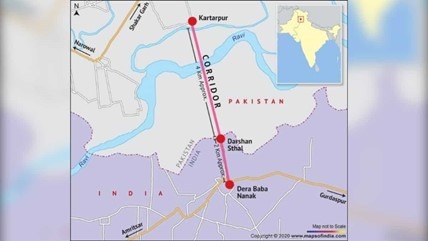
What is the Kartarpur Corridor?
- The Kartarpur Corridor is a visa-free border crossing and religious corridor that links Gurdwara Darbar Sahib Kartarpur in Pakistan to Gurdwara Dera Baba Nanak in Punjab, India.
- The Indian side of the corridor consists of a 1-km-long, four-lane highway connecting Dera Baba Nanak to the international border.
- Sikhs from Pakistan are unable to visit Dera Baba Nanak in India without first obtaining an Indian visa.
- This corridor provides a significant opportunity for pilgrims to visit sacred sites, strengthening the religious and cultural ties between India and Pakistan, though it has been affected by political dynamics, including the closure following military operations like Operation Sindoor.
Consider the following statements regarding the Kartarpur Corridor:
- The Kartarpur Corridor was operationalized to commemorate the 550th birth anniversary of Guru Nanak, the founder of Sikhism.
- The Kartarpur Corridor provides visa-free travel for Indian pilgrims as well as Overseas Citizens of India (OCI) cardholders from India, but they are required to return the same day.
- The Indian side of the Kartarpur Corridor includes a 1 km long highway from Dera Baba Nanak to the international border.
- Sikhs from Pakistan can visit Dera Baba Nanak in India without a visa under the agreement for the Kartarpur Corridor.
Which of the above statements is/are correct?
A) 1 and 2 only
B) 2, 3, and 4 only
C) 1, 2, and 3 only
D) 1, 2, 3, and 4
Answer: C) 1, 2, and 3 only
Explanation:
- Statement 1 is correct: The Kartarpur Corridor was indeed operationalized for the 550th birth anniversary of Guru Nanak.
- Statement 2 is correct: The corridor allows visa-free travel for Indian pilgrims and OCI cardholders, with the condition that they must return the same day.
- Statement 3 is correct: The Indian side of the Kartarpur Corridor features a 1 km long highway connecting Dera Baba Nanak to the international border.
- Statement 4 is incorrect: Sikhs from Pakistan cannot visit Dera Baba Nanak in India without first obtaining an Indian visa.
Central Council for Research in Ayurvedic Sciences revives two rare Ayurvedic manuscripts
Syllabus: GS2/Health
- The Central Council for Research in Ayurvedic Sciences (CCRAS) has successfully revived and critically edited two significant and rare Ayurvedic manuscripts: Dravyaratnākara Nighaṇṭu and Dravyanamākara Nighaṇṭu.
About the Manuscripts
- The manuscripts were meticulously edited and translated by the renowned manuscriptologist Dr. Sadanand D. Kamat. These texts are poised to become invaluable resources for students, researchers, academicians, and Ayurveda practitioners.
- Dravyaratnākara Nighaṇṭu: Authored by Mudgala Paṇḍita in 1480 AD, this manuscript consists of eighteen chapters, offering detailed insights into drug synonyms, therapeutic actions, and medicinal properties. It draws upon earlier classical works like the Dhanvantari and Raja Nighaṇṭu, while also documenting a wide array of novel medicinal substances sourced from plants, minerals, and animals.
- Dravyanamākara Nighaṇṭu: Attributed to Bhisma Vaidya, this manuscript acts as an appendix to the Dhanvantari Nighaṇṭu. It primarily focuses on the homonyms of drug and plant names. It contains 182 verses along with two colophon verses, offering detailed clarifications of botanical and medicinal terms.
About the Central Council for Research in Ayurvedic Sciences (CCRAS)
- The CCRAS is an autonomous body under the Department of AYUSH (Ayurveda, Yoga & Naturopathy, Unani, Siddha, and Homeopathy) in the Ministry of Health & Family Welfare.
- Functions: The Council’s responsibilities include formulating research strategies, conducting research programs, providing support to research institutions, and facilitating the exchange of knowledge within the field of Ayurveda.
- These newly revived manuscripts are expected to enhance the depth of Ayurvedic knowledge, contributing significantly to research and practice.
Consider the following statements regarding the revival of Ayurvedic manuscripts by the Central Council for Research in Ayurvedic Sciences (CCRAS):
- Dravyaratnākara Nighaṇṭu was authored by Mudgala Paṇḍita in 1480 AD and focuses primarily on the therapeutic actions and medicinal properties of substances from plant, mineral, and animal origins.
- Dravyanamākara Nighaṇṭu, attributed to Bhisma Vaidya, serves as a standalone appendix to the Raja Nighaṇṭu and focuses on the homonyms of drugs and plant names.
- The CCRAS is an autonomous body under the Ministry of Health & Family Welfare, and its functions include formulating research strategies, conducting research programs, and supporting research institutions in the field of Unani and Homeopathy.
- The manuscripts, once critically edited and translated by Sadanand D. Kamat, are expected to be significant resources for Ayurveda practitioners, researchers, and students.
Which of the above statements is/are correct?
A) 1, 3, and 4 only
B) 2, 3, and 4 only
C) 1, 2, and 4 only
D) 1, 2, 3, and 4
Answer: C) 1, 2, and 4 only
Explanation:
- Statement 1 is correct: The Dravyaratnākara Nighaṇṭu, authored by Mudgala Paṇḍita in 1480 AD, indeed focuses on drug synonyms, therapeutic actions, and the medicinal properties of substances from plants, minerals, and animals.
- Statement 2 is correct: Dravyanamākara Nighaṇṭu was attributed to Bhisma Vaidya and is a standalone appendix to the Dhanvantari Nighaṇṭu, focusing primarily on homonyms of drug and plant names.
- Statement 3 is incorrect: The CCRAS is an autonomous body under the Department of AYUSH, not the Ministry of Health & Family Welfare, and its mandate is specifically focused on Ayurveda, Yoga, Naturopathy, Unani, Siddha, and Homeopathy, rather than just Unani and Homeopathy.
- Statement 4 is correct: The manuscripts have indeed been critically edited and translated by Sadanand D. Kamat and are expected to serve as valuable resources for Ayurveda practitioners, students, and researchers.
Gut Microbiota
Syllabus: GS3/ S&T, GS2/ Health
- A recent study emphasizes how climate change-induced food insecurity may disrupt the human gut microbiota, leading to various health consequences.
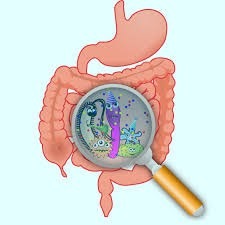
Key Highlights
- Impact on Food Yield and Quality: Increased concentrations of CO₂ are reducing essential nutrients such as iron, zinc, protein, and potassium in key crops like wheat, maize, and rice.
- Food Insecurity and Poor Diets: In low- and middle-income countries (LMICs), where diets are already limited in variety, climate-induced food scarcity exacerbates undernourishment. This leads to a reduction in gut microbiota diversity, increasing susceptibility to infections and chronic diseases.
- Heatwaves and Enteric Infections: Rising ambient temperatures are linked to an increase in foodborne and waterborne illnesses. These illnesses cause immediate gastrointestinal distress and also lead to long-term disruptions in the gut microbial composition.
Who is Most at Risk?
- Indigenous Communities: These groups often depend heavily on local food systems and have more diverse gut microbiota. However, their reliance on natural ecosystems makes them more vulnerable to climate-induced disruptions.
- Urban Poor in LMICs: The urban poor in these countries face compounded risks due to exposure to high pollution, poor sanitation, and low-quality diets, which significantly increase the chances of developing gut dysbiosis.
What is Gut Microbiota and Why Does It Matter?
- The human gut microbiota consists of over 100 trillion microbes, including bacteria, fungi, protozoa, and viruses. This complex microbial ecosystem plays a critical role in human health. When the balance of these microbes is disturbed—a condition known as dysbiosis—it can lead to various health problems, affecting the immune system, metabolism, and overall well-being.
- This study underscores the need to address climate change and food insecurity in order to protect human health and the microbiota that plays such a crucial role in bodily functions.
Consider the following statements regarding the impact of climate change on food security and gut microbiota:
- Elevated CO₂ concentrations reduce essential nutrients such as iron, zinc, protein, and potassium in major crops like wheat, maize, and rice, impacting global food security.
- Climate-induced food insecurity in low- and middle-income countries (LMICs) primarily exacerbates malnutrition by reducing the diversity of gut microbes, leading to increased susceptibility to infections and chronic diseases.
- Indigenous communities are less vulnerable to climate-induced disruptions to their food systems because of their greater dietary diversity and reliance on modern agricultural methods.
- Higher ambient temperatures increase the incidence of foodborne and waterborne diseases, which cause both immediate gastrointestinal distress and long-term microbial disruptions in the human gut.
Which of the above statements is/are correct?
A) 1, 2, and 4 only
B) 2, 3, and 4 only
C) 1, 3, and 4 only
D) 1, 2, and 3 only
Answer: A) 1, 2, and 4 only
Explanation:
- Statement 1 is correct: Elevated CO₂ concentrations are indeed reducing vital nutrients like iron, zinc, protein, and potassium in crops such as wheat, maize, and rice, negatively affecting food security.
- Statement 2 is correct: Climate-induced food insecurity in LMICs exacerbates undernourishment and leads to a reduction in gut microbiota diversity, heightening the vulnerability to infections and chronic diseases.
- Statement 3 is incorrect: Indigenous communities, despite having more diverse gut microbiota, are disproportionately vulnerable to climate-induced changes because their food systems are closely tied to natural ecosystems, which are more sensitive to climate impacts.
- Statement 4 is correct: Rising temperatures are linked to an increase in foodborne and waterborne diseases, which not only cause immediate gastrointestinal issues but also alter the microbial composition of the gut over time.
Ultrasound-Activated Piezoelectric Nanostickers
Syllabus: GS3/ Science and Technology
- Researchers have developed ultrasound-activated piezoelectric nanostickers to enhance stem cell regeneration, offering a promising non-invasive treatment for Traumatic Brain Injury (TBI).
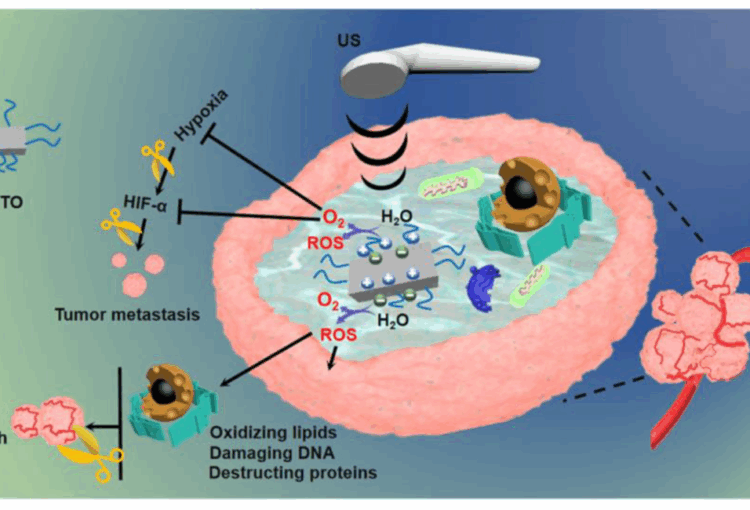
What is Piezoelectricity?
- Piezoelectricity refers to the ability of certain materials to generate an electric charge when subjected to mechanical stress.
- History: The phenomenon of piezoelectricity was discovered in 1880 by Pierre and Paul-Jacques Curie. They found that when certain crystals like quartz, tourmaline, and Rochelle salt were compressed along specific axes, an electrical voltage was produced on the surface of the crystals.
- Principle: The piezoelectric effect occurs in materials with asymmetric crystal structures. When mechanical stress is applied, the shift in the electric charge distribution creates a small electrical current. Some materials also exhibit the inverse piezoelectric effect, where applying an electrical current leads to mechanical deformation.
What are Piezoelectric Nanostickers?
- Piezoelectric nanostickers are tiny hybrid materials made from barium titanate and reduced graphene oxide (BTO/rGO). These materials are designed to adhere to the surface of neural stem cells.
- When activated by ultrasound, these nanostickers generate electrical signals that promote the growth and transformation of stem cells into neurons, providing a potential treatment for brain injuries like TBI.
Other Applications of Piezoelectric Materials
- Both direct and inverse piezoelectric materials are used in various technologies, including:
- Pressure sensors
- Accelerometers
- Acoustic devices
- Their ability to convert mechanical signals into electrical signals is crucial in the functioning of devices such as:
- Microphones
- Phonograph pickups
- Wave filters used in telephone communication systems
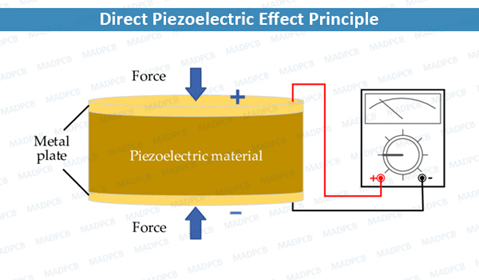
What is Traumatic Brain Injury (TBI)?
- Traumatic Brain Injury (TBI) is caused by an external mechanical force that leads to brain dysfunction. Common causes include a blow or jolt to the head.
- Symptoms of TBI can range from mild headaches to severe cognitive impairment or even death.
- One of the major challenges in treating TBI is the brain’s limited ability to regenerate lost neurons, which complicates long-term recovery efforts.
- This new approach using ultrasound-activated piezoelectric nanostickers holds promise for overcoming the brain’s regenerative limitations and offering more effective treatments for TBI.
Consider the following statements regarding piezoelectricity and its application in the treatment of Traumatic Brain Injury (TBI):
- Piezoelectricity is the ability of certain materials to generate an electrical charge when subjected to mechanical stress, discovered in 1880 by Pierre and Paul-Jacques Curie.
- Piezoelectric nanostickers made of barium titanate and reduced graphene oxide are used to enhance the regeneration of neural stem cells, converting mechanical energy into electrical signals that accelerate their transformation into neurons.
- The inverse piezoelectric effect occurs when mechanical stress applied to a material leads to the generation of an electrical charge, which is utilized in pressure sensors and acoustic devices.
- Traumatic Brain Injury (TBI) primarily occurs due to sudden jerks or jolts to the head, but modern treatments are often hindered due to the brain’s ability to regenerate neurons through traditional medical methods.
Which of the above statements is/are correct?
A) 1, 2, and 4 only
B) 2, 3, and 4 only
C) 1, 2, and 3 only
D) 1, 3, and 4 only
Answer: A) 1, 2, and 4 only
Explanation:
- Statement 1 is correct: Piezoelectricity refers to the phenomenon where certain materials generate an electrical charge when subjected to mechanical stress. The discovery in 1880 by Pierre and Paul-Jacques Curie is accurate.
- Statement 2 is correct: Piezoelectric nanostickers, made from barium titanate and reduced graphene oxide (BTO/rGO), are indeed used to stimulate neural stem cells when activated by ultrasound. These nanostickers help accelerate the growth and transformation of stem cells into neurons, which could aid in the treatment of TBI.
- Statement 3 is incorrect: The inverse piezoelectric effect actually refers to the phenomenon where applying an electrical current leads to mechanical deformation, not the other way around. It is correctly applied in various devices, but this statement contains a misdescription of the effect.
- Statement 4 is correct: Traumatic Brain Injury (TBI) occurs from an external force (such as a blow or jolt to the head). One of the major challenges in treating TBI is the brain’s limited regenerative capacity to replace lost neurons, which complicates treatment options.
IMDEX Asia 2025
Syllabus: GS3/Defence
- Indian Naval Ship INS Kiltan at IMDEX Asia 2025
- Indian Naval Ship (INS) Kiltan has arrived in Singapore to participate in the IMDEX Asia 2025 at the Changi Exhibition Centre.
About IMDEX Asia
- IMDEX Asia is the Asia-Pacific’s premier naval and maritime defence exhibition, established in 1997. Held biennially in Singapore, it serves as a key event for naval leaders, maritime defence companies, and technology innovators from across the globe.
- The 2025 edition of IMDEX Asia will feature over 230 exhibitors from 25 countries and is expected to attract more than 12,000 attendees from 70 nations.
Consider the following statements regarding IMDEX Asia 2025 and the participation of INS Kiltan:
- IMDEX Asia is a biennial naval and maritime defence exhibition established in 1997, hosted in Singapore, and is considered the premier such event in the Asia-Pacific
- The 2025 edition of IMDEX Asia will feature over 230 exhibitors from 25 countries, with 12,000 attendees from over 70 nations.
- INS Kiltan, an Indian Navy ship, is participating in IMDEX Asia 2025 as part of India’s increasing focus on strengthening its naval diplomacy in the region.
- IMDEX Asia focuses solely on naval defense technologies, excluding maritime technologies such as commercial shipping or port infrastructure.
Which of the above statements is/are correct?
A) 1, 2, and 3 only
B) 2, 3, and 4 only
C) 1, 3, and 4 only
D) 1, 2, and 4 only
Answer: A) 1, 2, and 3 only
Explanation:
- Statement 1 is correct: IMDEX Asia is indeed a biennial naval and maritime defence exhibition that was established in 1997 and is considered the premier event in the Asia-Pacific region.
- Statement 2 is correct: The 2025 edition of IMDEX Asia is expected to feature over 230 exhibitors from 25 countries, attracting more than 12,000 attendees from 70 nations, as mentioned in the context.
- Statement 3 is correct: INS Kiltan, an important Indian Navy ship, is participating in IMDEX Asia 2025, symbolizing India’s commitment to strengthening its naval diplomacy and cooperation with other countries in the region.
- Statement 4 is incorrect: IMDEX Asia is not restricted to naval defense technologies; it also includes maritime technologies that span commercial shipping, port infrastructure, and maritime security, beyond just military defense systems.
World Red Cross Day
Syllabus: Miscellaneous
- World Red Cross Day (also known as Red Crescent Day) is observed every year on 8 May, a tradition that began in 1948.
About World Red Cross Day
- The day commemorates the birth anniversary of Henry Dunant (1828–1910), the founder of the International Red Cross and Red Crescent Movement and the first recipient of the Nobel Peace Prize.
- Dunant was deeply affected by the atrocities he witnessed during the Battle of Solferino in 1859, a conflict between France and Austria, where he assisted in treating around 40,000 wounded alongside local residents.
- In 1863, the International Red Cross and Red Crescent Movement was founded, which has since grown into the largest humanitarian network in the world. Today, it operates in 191 countries and is supported by more than 16 million volunteers.
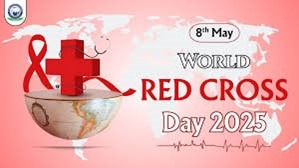
Theme for This Year
- The theme for World Red Cross Day 2025 is “Keeping Humanity Alive” — a tribute to those who selflessly give their time, and sometimes their lives, to alleviate the suffering of others and safeguard human dignity.
Consider the following statements regarding World Red Cross Day:
- World Red Cross Day is observed annually on 8 May, marking the birth anniversary of Henry Dunant, the founder of the International Red Cross and Red Crescent Movement.
- The International Red Cross and Red Crescent Movement was founded in 1863, and it is the largest humanitarian organization, active in 191 countries and supported by over 16 million volunteers.
- Henry Dunant was the first recipient of the Nobel Peace Prize for his role in organizing humanitarian aid following the Battle of Solferino in 1865, where he assisted in caring for wounded soldiers.
- The theme for World Red Cross Day 2025 is “Keeping Humanity Alive”, which emphasizes the role of humanitarian aid workers in upholding human dignity amidst suffering and disaster.
Which of the above statements is/are correct?
A) 1, 2, and 4 only
B) 2, 3, and 4 only
C) 1, 2, and 3 only
D) 1, 2, and 4 only
Answer: A) 1, 2, and 4 only
Explanation:
- Statement 1 is correct: World Red Cross Day is observed on 8 May to honor the birth of Henry Dunant, the founder of the International Red Cross and Red Crescent Movement.
- Statement 2 is correct: The International Red Cross and Red Crescent Movement was indeed founded in 1863 and is currently present in 191 countries, with more than 16 million volunteers.
- Statement 3 is incorrect: Henry Dunant was the first recipient of the Nobel Peace Prize, but it was awarded to him in 1901, not 1865, and not directly for his actions during the Battle of Solferino (which occurred in 1859). He received the prize for his efforts in founding the Red Cross and organizing the first Geneva Convention for the treatment of wounded soldiers.
- Statement 4 is correct: The theme for World Red Cross Day 2025 is indeed “Keeping Humanity Alive”, which reflects the dedication of humanitarian workers and the importance of preserving human dignity in times of crisis.
UN Vesak Day
Syllabus :Miscellaneous
- During the UN Day of Vesak 2025 celebrations held in Vietnam, a Memorandum of Understanding (MoU) was signed between the International Buddhist Confederation (IBC) and the National Vietnam Buddhist Sangha (VBS). The MoU aims to deepen cooperation and promote shared Buddhist values of compassion, wisdom, and peace.
About UN Vesak Day
- UN Vesak Day is celebrated on the full moon in May, marking the most sacred day for Buddhists worldwide.
- This day commemorates three pivotal events in the life of Buddha:
- Birth of Buddha in 623 B.C.
- Buddha’s enlightenment.
- Buddha’s passing away in his eightieth year.
- UN Recognition: The UN General Assembly recognized Vesak Day in 1999 to honor the significant role of Buddhism and its teachings in promoting peace and global spirituality.
- Global Celebrations: Vesak Day is celebrated annually at UN Headquarters and various UN offices
Importance of Vesak Day
- The day is a reflection of Buddha’s teachings on compassion, peace, and service to humanity. It serves as an occasion to honor Buddhism’s enduring contributions to global spirituality and promote unity and peace across cultures and nations.
Consider the following statements regarding UN Day of Vesak and its recent developments:
- UN Day of Vesak is celebrated on the full moon of May, marking the birth, enlightenment, and passing away of Buddha.
- The UN General Assembly officially recognized Vesak Day in 1999 as a global event to honor Buddhism’s contributions to world peace and spirituality.
- An MoU was signed between the International Buddhist Confederation (IBC) and the National Vietnam Buddhist Sangha (VBS) in 2025 to enhance cooperation and promote Buddhist values of compassion and peace.
- Vesak Day is celebrated annually at UN Headquarters, but it is not observed in Buddhist-majority countries outside of the UN system.
Which of the above statements is/are correct?
A) 1, 2, and 3 only
B) 1, 2, and 4 only
C) 1, 3, and 4 only
D) 2, 3, and 4 only
Answer: A) 1, 2, and 3 only
Explanation:
- Statement 1 is correct: UN Day of Vesak is indeed celebrated on the full moon of May, marking the birth, enlightenment, and death of Buddha, the three key events in his life.
- Statement 2 is correct: The UN General Assembly recognized Vesak Day in 1999 to honor the global contributions of Buddhism to peace and spirituality.
- Statement 3 is correct: An MoU was signed between the International Buddhist Confederation (IBC) and the National Vietnam Buddhist Sangha (VBS) in 2025 to promote Buddhist values such as compassion, wisdom, and peace.
- Statement 4 is incorrect: Vesak Day is not only celebrated at UN Headquarters but also widely observed in Buddhist-majority countries around the world, irrespective of UN recognition.
